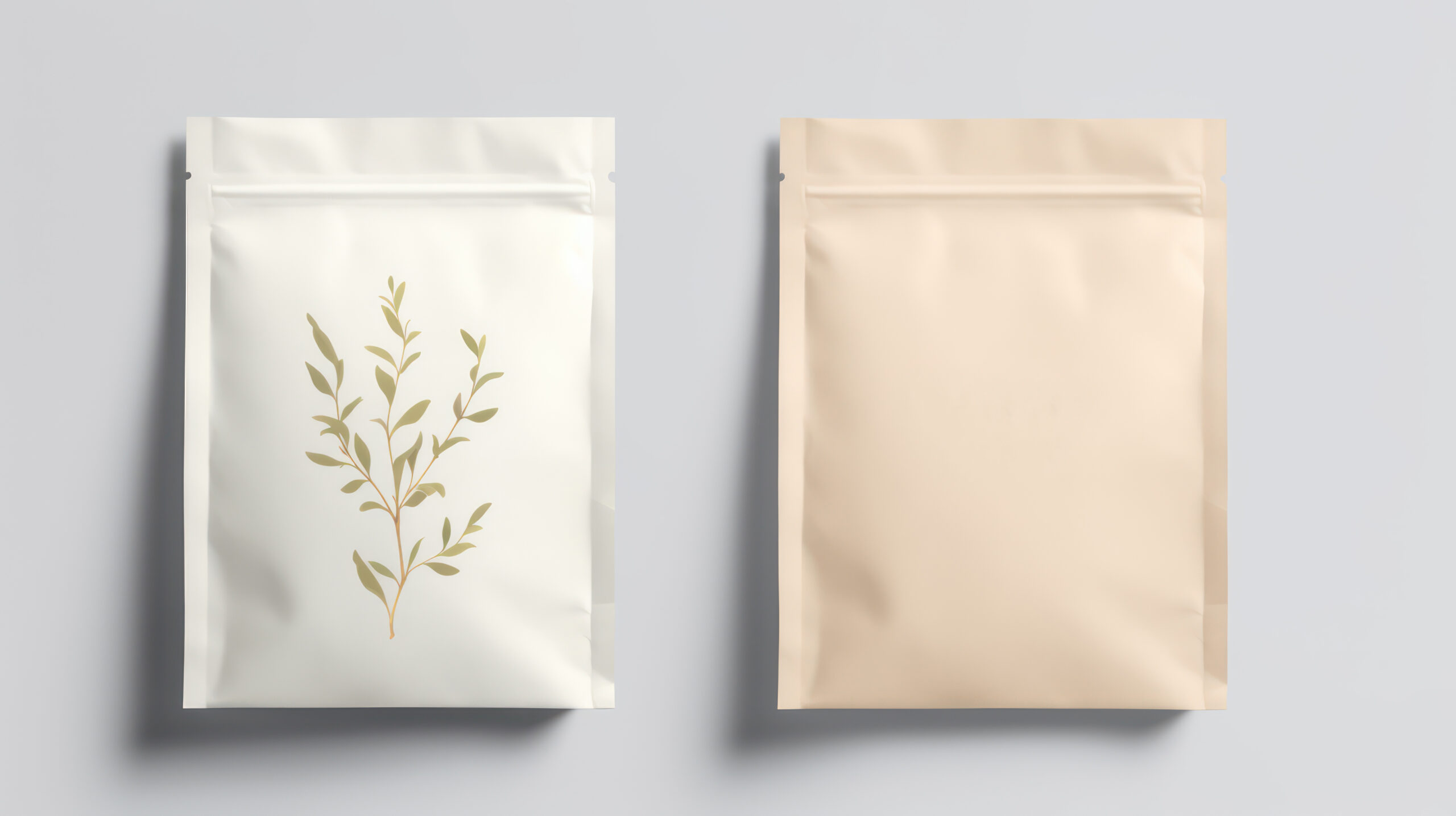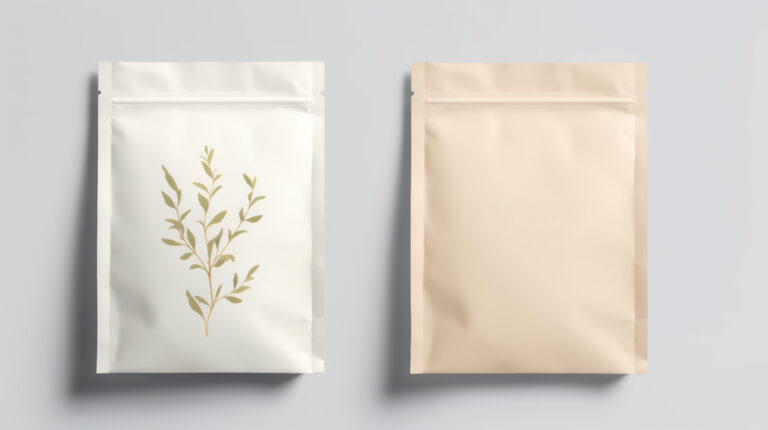In the competitive landscape of product marketing, the packaging can play as pivotal a role as the product itself. It’s not just about wrapping; it’s a crucial marketing tool that communicates brand values, enhances visibility, and significantly impacts customer experience. With options like stock packaging and custom packaging available, businesses must make informed choices to stand out in the crowded marketplace. This article explores the differences between stock packaging and custom packaging, delving into their advantages, disadvantages, and which might be better suited for your specific business needs.
Stock packaging refers to pre-made, ready-to-ship containers and wraps used by a wide array of companies. It offers convenience and cost-effectiveness, making it a go-to for businesses operating under tighter budgets or requiring quick packaging solutions. However, its generic nature may limit brand exposure and uniqueness.
On the other hand, custom packaging design services are tailored to fit a company’s specific product and brand identity. It requires more significant investment and production time but offers unique branding opportunities and can be aligned more closely with marketing strategies. Tailored designs, specific materials, and a focus on the minutiae of user experience can transform packaging from a mere container to an integral part of the branding experience.
Let’s delve deeper into the nuances of each packaging type and discover how choosing the right packaging can elevate a brand, influence perceptions, and drive sales.
Stock Packaging: Pre-Made Solutions
Definition and Characteristics of Stock Packaging
Stock packaging comprises the ready-made packaging solutions that are mass-produced and available for immediate use. These are typically generic designs tailored to industry standards without specific modifications for individual brands. Common types include cardboard boxes, plastic containers, and basic flexible packaging bags which serve a diverse range of industries, from food service to retail.
Advantages of Stock Packaging
The primary benefit of opting for stock packaging lies in its readiness and availability. These solutions can be quickly deployed, making them ideal for businesses needing immediate packaging options. Cost-effectiveness is another significant advantage, as the economies of scale in their production reduce the cost per unit, making them accessible for all business sizes. For instance, a standard corrugated box can cost significantly less than a custom-designed package.
Limitations of Stock Packaging
However, the main drawback of stock packaging is its lack of customization. Because it is not tailored to specific products or brands, it may not always perfectly fit the product, potentially compromising protection or aesthetic appeal. Additionally, the generic nature of stock packaging can dilute a brand’s identity, as it does not allow for unique branding elements that make products stand out on shelves.
Custom Packaging: Tailored Solutions
Definition and Features of Custom Packaging
Custom packaging, in contrast, is specifically designed and manufactured according to the needs of a particular product and brand. This type of packaging can include a variety of customization options such as size, shape, material choice, design specifics, and branding elements tailored to enhance product presentation and reinforce brand identity.
Advantages of Custom Packaging
The tailored nature of custom packaging offers several distinctive benefits. Primarily, it allows for a perfect fit for the product, potentially improving protection and customer unboxing experiences. Brand enhancement is a significant advantage, as custom packaging can incorporate specific logos, brand colors, and designs that promote brand recognition and customer loyalty. According to a study by Dotcom Distribution, 52% of consumers are likely to make repeat purchases from an online merchant that delivers premium packaging.
Considerations for Custom Packaging
Despite its numerous benefits, custom packaging demands higher budget considerations and longer production timelines. Companies need to evaluate their brand positioning and customer expectations accurately to determine if the investment in custom solutions will yield a sufficient return. These factors make custom packaging a strategic choice rather than a standard option.
Key Differences Between Stock Packaging and Custom Packaging
Flexibility and Customization
While stock packaging offers limited customization opportunities—often restricted to labeling—custom packaging provides complete control over every aspect of the packaging design. This flexibility enables businesses to tailor solutions that meet specific product dimensions, safety requirements, and aesthetic preferences.
Branding Opportunities
Custom packaging inherently supports stronger branding opportunities. With the ability to incorporate specific typefaces, colors, and imagery, businesses can ensure that every aspect of the packaging aligns with the brand’s core message and visuals. In contrast, stock packaging usually lacks this level of personalization, offering minimal branding opportunities, mainly through stickers or generic prints.
Fit and Functionality
Custom packaging is designed to accommodate the exact dimensions and physical characteristics of the product, enhancing both functionality and visual appeal. Stock packaging might not always provide an optimal fit, which can lead to increased damage rates during shipping or an unappealing presentation in retail environments.
Cost and Lead Time
Generally, stock packaging is more economical and faster to procure than custom options. However, for brands that prioritize differentiation and targeted consumer engagement, the higher cost and longer lead times of custom packaging can be a worthwhile investment.
Choosing the Right Packaging Solution
When deciding between stock packaging and custom packaging, businesses must consider a variety of factors: budget constraints, product specifications, branding objectives, and market competition. These elements will dictate whether the immediate availability and cost-effectiveness of stock packaging outweigh the branding and customization benefits of custom packaging solutions.
Considering the complexity and impact of packaging decisions, it’s advisable for businesses to consult with packaging experts who can provide insights based on industry trends and consumer behaviors. Such professional guidance and packaging branding tips can help in selecting the optimal packaging strategy that aligns with business goals and market demands.
Environmental Impact: Sustainability in Packaging Choices
Sustainability in Stock Packaging
Stock packaging, due to its mass-produced nature, often uses materials that are less specialized and more commonly available. This can be advantageous from a recycling standpoint as common materials like standard plastics and cardboard are widely recycled. However, the inability to tailor the quantities and dimensions to the exact need of the product can lead to material waste. Larger companies are increasingly looking for ways to ensure that even their stock packaging options are as environmentally friendly as possible, utilizing recyclable or biodegradable materials wherever applicable.
Sustainability in Custom Packaging
Custom packaging offers the ability to not only choose materials that are more sustainable but also to design packaging that fits the product exactly, thereby reducing material waste. Businesses can choose innovative, eco-friendly materials such as biodegradable plastics, mushroom packaging, or recycled fibers, aligning with global sustainability trends. For instance, the use of recycled cardboard offers a reduction in the carbon footprint associated with production as highlighted in sustainability reports by major packaging companies.
Technological Advancements: The Role of Innovation in Packaging
Technology in Stock Packaging
In the realm of stock packaging, technological advancements have primarily focused on improving the efficiency of manufacturing processes and materials to reduce costs and environmental impact. Innovations such as improved barrier films that extend the shelf life of food products without additional preservatives are an example of how even generic packaging options are evolving.
Technology in Custom Packaging
For custom packaging, technology opens up an array of possibilities. From 3D printing for intricate package prototypes to advanced digital printing techniques that allow for vibrant, detailed graphics on small batch runs, technology enhances the viability of personalized packaging. Additionally, smart packaging technologies, which integrate QR codes, NFC tags, or RFID chips, can turn a simple package into a valuable consumer engagement tool, providing authenticity verification, product tracking, and interactive experiences.
Testing and Quality Assurance: Ensuring Packaging Integrity
Testing in Stock Packaging
Testing for stock packaging typically focuses on general standards that need to be met for durability, safety, and compliance with industry regulations. For industries such as food and pharmaceuticals, adherence to health and safety standards is crucial, and off-the-shelf solutions are pre-tested to meet established criteria.
Testing in Custom Packaging
Custom packaging, however, allows companies to conduct more specific tests that are tailored to the product’s unique requirements. Stress tests for weight, temperature extremes, and drop tests can be customized to simulate the specific conditions in which the product will be stored and transported. This not only ensures product safety but also enhances consumer trust, as companies can guarantee that the packaging will uphold the integrity of the product through to the end-user.
Cost-Benefit Analysis: Assessing Long-Term Gains
Conducting a cost-benefit analysis is essential when choosing between stock and custom packaging. While stock packaging may have lower upfront costs, the potential long-term benefits of custom packaging—such as enhanced customer satisfaction, reduced environmental impact, and increased brand loyalty—can translate into greater profitability over time.
It’s crucial for businesses to calculate not just the immediate costs but also to forecast the potential return on investment (ROI) that effective packaging design could yield. Factors such as repeat customer rates, reduced damage returns, and enhanced brand image all contribute to the financial calculations that make custom packaging an appealing option for many businesses.
In summary, while stock packaging offers simplicity and immediate cost savings, custom packaging provides extensive benefits that can align more closely with strategic business goals, including branding, customer engagement, and sustainability. Each business must evaluate its specific needs and customer expectations to determine the most effective packaging strategy. By considering these elements, companies can make informed decisions that not only comply with their financial capabilities but also enhance their market presence and consumer base.
Market Perception and Consumer Preferences
Influence of Packaging on Consumer Buying Behavior
Packaging plays a critical role in influencing consumer purchasing decisions. According to a study by WestRock, 66% of consumers have tried a new product because the packaging caught their eye. This highlights the power of custom packaging in driving consumer behavior and increasing sales through appealing designs and standout branding elements. On the other hand, stock packaging, while functional, may not evoke the same level of engagement or brand connection, potentially leading to lower shelf impact in retail settings.
Consumer Preferences for Sustainable Packaging
An increasing number of today’s consumers are environmentally conscious and prefer to purchase products that are packaged sustainably. A Nielsen survey indicated that 73% of global consumers would definitely or probably change their consumption habits to reduce their environmental impact. This trend underscores the importance of businesses incorporating sustainable practices in both stock and custom packaging solutions.
Efficiency in Production and Distribution
Production Speed for Stock Packaging
One of the standout advantages of stock packaging is its speed of production. Being pre-made, it allows companies to quickly distribute products without delays associated with the design and manufacture of custom options. This can be particularly beneficial during peak sales periods or when replenishing stock quickly is crucial.
Production Complexity and Time in Custom Packaging
Conversely, custom packaging requires a more extended period for design, prototyping, and production. This involves coordinated efforts across various departments, including marketing, design, and manufacturing. While this process can delay product rollout, the investment might lead to significantly enhanced brand portrayal and customer reception.
Regulatory Compliance and Industry Standards
Compliance with Industry Standards Using Stock Packaging
Stock packaging is often designed to comply with industry regulations and standards, which can be highly beneficial for companies in specialized sectors like pharmaceuticals or food and beverage. These pre-made packaging solutions ensure that companies can quickly align with legal requirements without the extensive testing and certification processes required for custom designs.
Navigating Compliance in Custom Packaging
Custom packaging, while offering distinct branding and design advantages, also comes with the burden of ensuring all materials and designs meet industry-specific regulations. This involves rigorous testing and adaptation to meet stringent standards, which could add to costs and lead times but guarantee compliance and safety of the packaged product.
Brand Loyalty and Customer Retention
Building Brand Loyalty with Custom Packaging
Custom packaging allows brands to craft unique, memorable packaging experiences that resonate with consumers. This personal touch can significantly enhance customer satisfaction and loyalty. The tailored unboxing experience can turn a routine purchase into a special event, encouraging repeat business and creating passionate brand advocates.
Impact of Stock Packaging on Customer Retention
While stock packaging might be less effective in building brand identity, it can still be sufficient for products where packaging is not a significant element of the consumer choice. However, for industries where branding is crucial, such as in cosmetics or luxury goods, custom packaging might be necessary to foster stronger customer connections and encourage loyalty.
In the contrasting worlds of stock and custom packaging, businesses need to weigh multiple factors—including market demands, production capabilities, budget constraints, and long-term brand development goals—to determine the most appropriate packaging strategy. Each type has its place in the commercial landscape, and the optimal choice varies from one product and market to another. By understanding and adapting to consumer expectations and industry trends, companies can select packaging solutions that not only meet immediate logistical needs but also support strategic brand growth and consumer engagement.
Making the Right Packaging Choice for Your Brand
In the bustling marketplace of today, how a product is packaged can be just as critical as the product itself. The choice between stock packaging and custom packaging should be made with a deep understanding of not only your product’s needs but also your brand’s positioning and the values of your target audience. While stock packaging can offer quick and cost-effective solutions, it may lack the pizzazz and tailored fit that custom packaging brings to the table, which could elevate your brand and engage customers at a deeper level.
Custom packaging stands out as a powerful tool for businesses aiming to strengthen their brand identity, improve customer satisfaction, and ultimately foster loyalty. However, the benefits of speed, cost efficiency, and compliance cannot undermine the relevance of stock packaging, especially for businesses looking for straightforward, functional packaging solutions.
As a business, when evaluating your packaging needs, consider how your choice will impact consumer perception, align with brand values, and contribute to sustainability. Strive to find a balance that not only satisfies your operational requirements and budget constraints but also resonates well with your customers and enhances their experience.
Are you ready to explore the best packaging options tailored to your product needs and brand aspirations? Visit One Source to discover a range of stock and custom packaging solutions designed to propel your brand to the forefront of your industry. You may also contact our packaging experts for more information.




